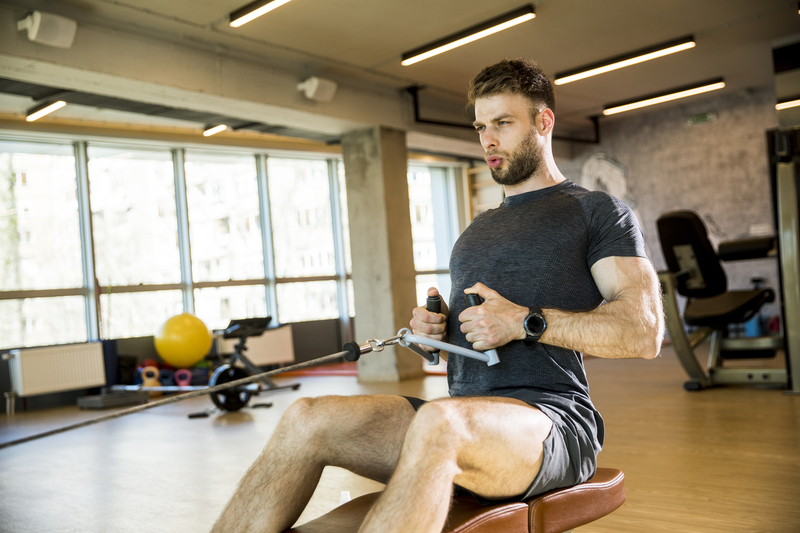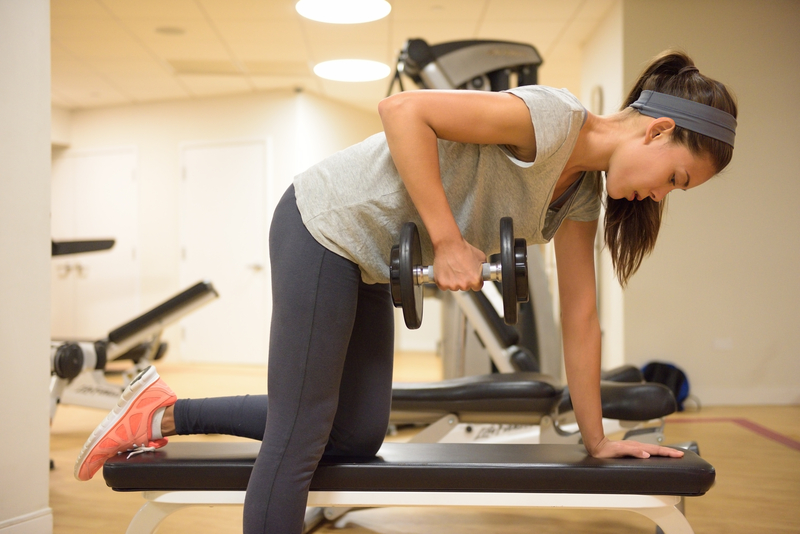How to Prevent (or Reverse) a Hunchback

If your spine is looking more like the letter “C” and less like the letter “S,” then it’s time to work on correcting hunchback posture. Good news! It’s not something you necessarily have to live with, and if you already are, you can make some moves to help correct it.
What Is a “Hunchback”?
The term “hunchback” is the layman’s term for a condition known as “kyphosis.” Although your spine naturally curves, kyphosis is an exacerbated forward bend in the thoracic (upper mid) part of your back, which causes your head, neck, and shoulders to roll forward.
Types of Hunchback
There are several types of hunchback or kyphosis.
You can be born with congenital kyphosis, which can cause your spine to develop improperly, causing excess curvature.
Some people are also born with Scheuermann’s kyphosis, in which your vertebrae are formed in a wedge shape versus the more typical rectangular shape. The wedge shape naturally causes the spine to curve forward.
You may develop postural kyphosis (the most common form) over time due to poor posture and muscle weakness or imbalances. Slouching and continued poor posture contribute to this condition.
Lastly, older adults are prone to hyper-kyphosis, which is a severe and obvious curvature of the spine and can be due to weakened muscles and even bone loss experienced over time.
What Causes a Hunchback?
As discussed, some forward curvature of the spine problems can be due to medical conditions, abnormalities, and injuries. But, more often than not, a hunchback is caused by muscle imbalance, poor posture, and tight muscles. These symptoms can worsen over time and with age, and if not addressed, can develop into a more serious and possibly debilitating form of kyphosis.
How to Prevent a Hunchback
Even if you’re getting older it doesn’t mean you’re doomed to have a hunchback. You can start by correcting your hunchback posture before it even begins. Try some of the following strategies:
- Work on your posture—be aware of how you’re sitting and standing. Periodically check in with yourself to see if you’re slouching, especially when sitting for long periods or on the computer, tablet, or phone. When sitting or driving, consciously pull your shoulders back and push your head back, imagining your head in line with your upper back. When walking, make sure to keep your shoulders back, head high, and your core tight to maintain good posture.
- Keep your muscles in balance—don’t over- or under-train any area. You’ll often see people who work their chest more often than back with rounded shoulders and a back that’s headed toward a hump. This is due to the stronger chest muscles pulling the head, neck, and shoulders forward. Ensuring you work muscles in both the front and back evenly for equal development and strength can help prevent this.
- Strengthen your core—work on your entire core, including the abdominals, obliques, and lower back. Keeping your front and back equally strong will help give your body the strength it needs to stand fully upright.
- Maintain a healthy weight—excess weight can make kyphosis worse. Keeping your figure slim and trim will help you prevent hunchback before it even has a chance to start.
- Stretch—stretching tight muscles like hamstrings and chest and shoulder muscles can go a long way toward helping you straighten your back. Stretch often and stay limber!
Correcting Hunchback Posture
If you’re already dealing with kyphosis of any degree, it’s time to go into corrective mode. If you want to avoid physical therapy, medication, surgery, or a back brace, try these exercises and stretches:
- Chest Stretch—stretching and opening the chest is critical for correcting a hunchback. Loosening these tight muscles is the release your body needs to allow your spinal alignment to correct. Stand in a doorway with your arms straight out to your sides, palms on the wall at each side. Lean forward to create a good stretch across your chest and shoulders. Hold for five to ten seconds and then return to the start.

- Chin Retractions—start by sitting or standing straight and place your finger on your chin. Slide your chin back (imagine you were shutting a drawer). Hold this position for five seconds and then release. Repeat. If you’re in your car or in a seat with a high back, try sliding your head back until it touches the headrest. Maintain this posture.
- Face Pulls—these will help you pull your shoulders back. Stand in front of a cable machine and, using either handles or a double-handled rope, place the handles/pulley at eye level. Next, bring your elbows up and out to your sides, and then, while grasping a handle in each hand, pull your hands toward your shoulders. Hold the contraction for a count of three and slowly allow the weight to return to the start. Repeat ten times.
Note: If you don’t have access to a pulley machine, you can place a resistance band around a tall, immovable surface and perform the same movement by grasping the band at each end and pulling your arms back. Just remember to double-check that your band is in pristine condition with no tears or holes so it doesn’t break as you’re performing the exercise.

- Seated Rows—any type of rowing motion will help you pull your shoulders back and prevent your back from hunching. If you have access to a seated row machine, simply sit upright and grab the handles, pulling your elbow back past your sides as far as they will go.

- Dumbbell Rows—these can be done with dumbbells or even a resistance band by stepping on the middle and grasping both ends. With the weight in each hand, place your feet evenly about shoulder-width apart and bend forward at the hips, keeping your back straight. Allow your arms to hang down. Next, squeeze your back muscles, bending your arms as you raise your elbows up, and inward toward your sides. Picture yourself trying to touch your elbows behind your back. Hold this squeeze for a count of three and then control the weight on the way back to the start. Repeat.
Note: You can also do one weight/one arm at a time and place the opposite hand and knee on a bench for stability.

Adding these exercises and stretches to your regular workouts can really help with both preventing and correcting hunchback posture.





